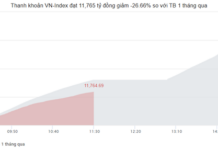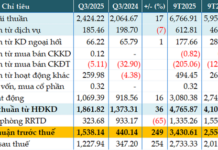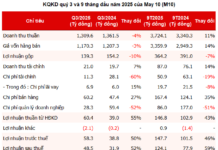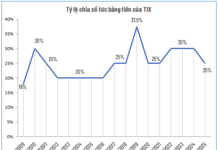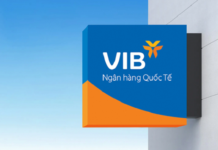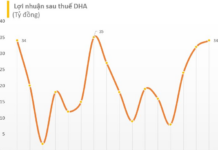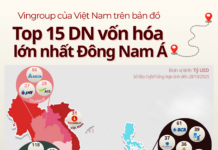Solving the issues of accidents and congestion, Ho Chi Minh City has put into operation the first Smart Traffic Control Center in the country.
Turning off the engine of his taxi, Tran Nhat Nguyen, a resident of District 12, Ho Chi Minh City, concluded a smooth ride and stepped into a cafeteria for lunch before embarking on his next journey.
“A treasure” for commuters
Nguyen shared that his job often requires him to travel across various districts in the city. Apart from Google Maps, the Ho Chi Minh City Traffic Control Center (TTGT) app, which provides quick updates on traffic conditions, is an indispensable “treasure” for drivers. By regularly monitoring the cameras on this app, their journeys are more comfortable, and both drivers and passengers no longer endure the exhausting traffic jams they used to face.
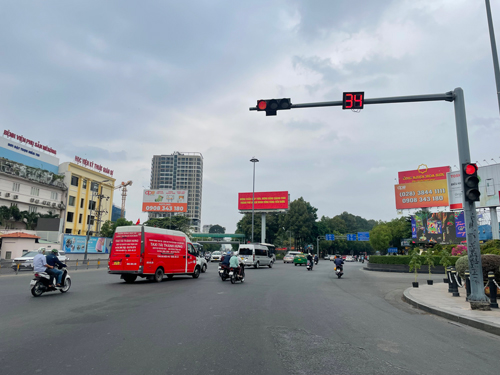
Digitized data in the transportation sector brings more convenience to Ho Chi Minh City residents.
According to Nguyen, residents no longer have to passively endure traffic jams as they now have alternative routes thanks to the app installed on their personal devices. “It would be even better if the city could upgrade the app to predict traffic conditions a few hours in advance. This way, people can proactively avoid traffic jams and floods. As a result, there would be less chaos and reduced environmental pollution,” he commented.
The TTGT Ho Chi Minh City app is part of a system of solutions aimed at optimizing traffic management in the city. Previously, at the end of 2019, the Ho Chi Minh City Urban Traffic Management and Operation Center officially commenced operations. This center is considered the first of its kind in the country to apply modern technology in traffic management and operation.
As such, traffic signals are flexibly controlled through a system of sensors and monitors. Various traffic parameters, such as traffic flow, average speed, and vehicle density, are continuously transmitted to the center. Based on this data, the center provides analysis, warning, and remote traffic diversion, helping to alleviate congestion, especially in critical areas like Tan Son Nhat Airport and Cat Lai Port.
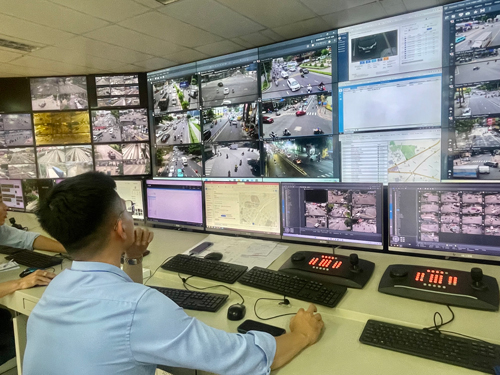
Engineers monitoring the camera system at the Ho Chi Minh City Urban Traffic Management and Operation Center.
Promoting better driving habits
Currently, there are over 1,100 cameras connected to the Ho Chi Minh City Urban Traffic Management and Operation Center. Within the 36 sq km area covering Districts 1, 3, 5, 10, and a part of Districts 4 and Tan Binh, the camera system and monitoring equipment are transferred through 220 signal lights.
Additionally, approximately 25 speed measurement devices are installed at nine locations on the main roads leading to the city, such as National Highway 22, Hanoi Highway, Nguyen Van Linh Street, Phu My Bridge, National Highway 1, and Saigon River Tunnel. These devices assist in monitoring traffic conditions and contribute to the swift handling of congested areas.
“For over four years, the Smart Traffic Control Center has positively impacted the traffic participation awareness of the people, bringing economic and social benefits to Ho Chi Minh City.”
The system also provides traffic information to residents and supports the handling of violations of traffic safety and order. Additionally, it enables the simulation, analysis, and prediction of traffic demands to strategize and adapt to changes in the travel routes chosen by residents.
Not only does it help residents avoid congested areas, but the “eye in the sky” system and speed counters installed on many roads in Ho Chi Minh City have also improved the awareness of many drivers. As a result, instances of speeding and reckless driving have decreased. Notably, on roads with a high density of vehicles, such as National Highway 22, Hanoi Highway, Nguyen Van Linh Street, Phu My Bridge, and National Highway 1, where trucks and containers frequently travel, the camera system and speed counters remind drivers to slow down.
Mr. Tran Van Suu, a resident living near National Highway 22 in Hoc Mon District, observed that thanks to the speed measurement devices and warning signs, trucks and coaches drive more slowly. This has also led to a reduction in traffic accidents.
Striving for perfection
According to Mr. Doan Van Tan, Director of the Ho Chi Minh City Urban Traffic Management and Operation Center, to expand the scope and upgrade the smart features, the unit will bid and implement a project to invest in a flexible traffic control system on the city’s main transport axes at the end of 2024. They will also supplement the camera system to serve traffic control, with a total investment of VND 250 billion.
Upon completion, the project will help expand the scope of data digitization for the transportation sector. This database will enable authorities to monitor traffic conditions, contribute to the swift handling of congested areas, and provide traffic information to residents. The system will also support the handling of traffic safety and order violations and enable the simulation, analysis, and prediction of traffic demands.
According to Mr. Tan, 200 traffic signal lights in Districts 4, 6, and 7 will be upgraded and connected to the Ho Chi Minh City Urban Traffic Management and Operation Center, bringing the total number of connected signal lights to 420.
In parallel, the unit will invest in traffic monitoring equipment at 300 locations, increasing the number of roads with traffic monitoring equipment to about 40. They will also enhance surveillance cameras and combine artificial intelligence (AI) technology to support the automatic detection of traffic incidents at 200 locations.
“In addition to investing in the upgrade of signal lights, installing cameras and traffic monitoring equipment, the project will also invest in software upgrades at the Ho Chi Minh City Urban Traffic Management and Operation Center. We are finalizing the procedures and will organize the bidding and construction at the end of 2024, with the project expected to be completed by the end of 2025,” said Mr. Tan.
(To be continued)
Five Pillars
Recognizing the importance of digital transformation in driving economic and social development, Ho Chi Minh City is vigorously promoting pilot projects that apply technology in various fields.
The People’s Committee of Ho Chi Minh City shared that digital transformation is being implemented synchronously and consistently across five pillars: fundamental digital platforms, robust digital economy, prevalent digital society, progressive digital government, and secure digital environment. This holistic approach to digital transformation will create a positive impact and encourage active participation from both citizens and the business community.
P.Anh

